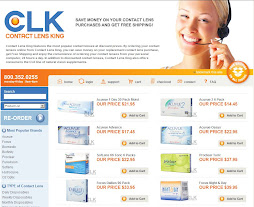Just because RGP (rigid gas permeable, oftentimes referred to just as GPs) contact lenses have been around a long time and have been seemingly displaced in popularity by soft contacts, they are still an important player in correcting eye disorders.
Rigid Gas Permeable lenses came along as a better alternative to PMMA, or hard, contacts. Hard contacts did not allow oxygen to pass through to the eye, setting up a situation wherein prolonged wear caused complications such as swelling, cloudiness to the cornea, blurred vision, and infection. The materials in RGP contacts are more oxygen friendly and the firm construction of the lens conducts a flow of tears across the cornea during blinking; this provides adequate and much-needed moisture to the eyes.
Gas permeable lenses hold their own alongside soft contacts for a variety of reasons. They can be fitted in a more custom-made manner to the eye and retain their shape better during the blinking process, which keeps crisp vision from fluctuating. The rigidity also assists astigmatism patients in maintaining a rounded cornea that will let light hit the center of the retina, producing desired clarity of vision. In this vein, GPs become the only resort for those with irregular or severely scarred corneas. They are also a top choice when post-LASIK wear becomes necessary to correct remaining aberrations following surgery.
While it is true that on average it takes two to three weeks to become comfortable with GPs (soft lenses tend to provide more immediate comfort), once a satisfactory fit is reached, the quality of vision attained makes the adjustment period well worth it.
The care regimen* for GPs is easier because of their resistance to proteins and other deposits; they hold up over time to repeated cleaning. Needless to say, a longer-lasting lens can be less expensive due to fewer replacements.
Gas permeable lenses can be made with various designs and materials, freeing the fitter to fashion a contact to meet precise needs. Recent advances in technology have allowed a hybrid lens to be developed that combines the best features of soft contacts with those of GPs. The result is a lens with a rigid gas permeable center married to a soft outer skirting—giving the wearer sharp vision and comfort.
So, despite the vogue for soft contacts, GPs should not be discounted when selecting a suitable lens. They have a proven track record that makes them far from obsolete.
*Always follow your eye doctor’s instructions for proper wear and cleaning of contact lenses. They will also assist in choosing the best lens and answer any questions concerning GPs, soft contacts, and other lenses available to you.
Monday, March 1, 2010
Advantages of RGP Contact Lenses
Subscribe to:
Post Comments (Atom)





No comments:
Post a Comment